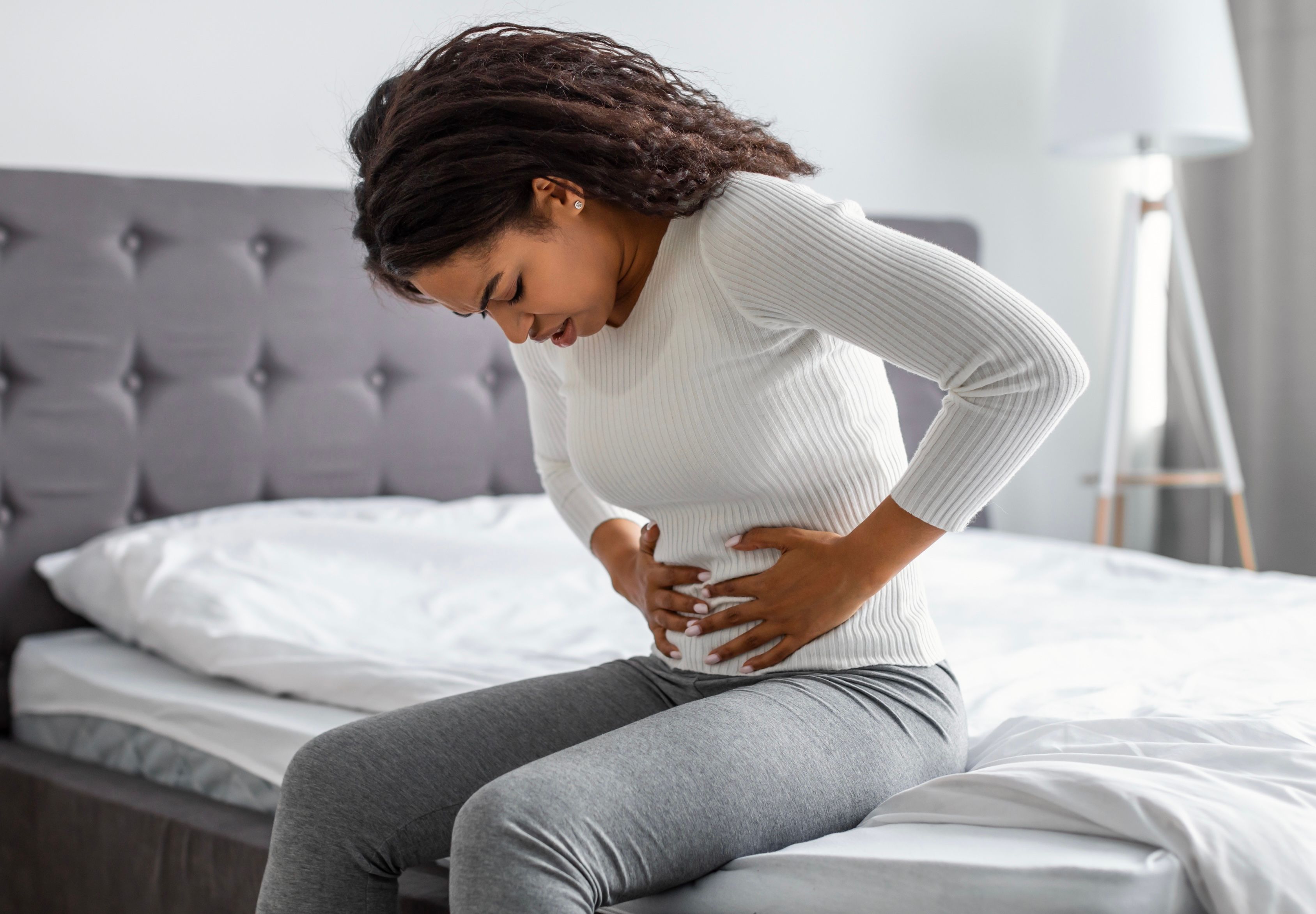Are you experiencing chronic abdominal or pelvic pain outside of your menstrual cycle? Are you facing challenges with infertility? Pain during intercourse, bowel-related issues labelled as Irritable Bowel Syndrome (IBS), or bladder dysfunction? Are you suffering from lower back or leg pain, bloating, extreme fatigue, or debilitating menstrual periods? Even rare symptoms like lung collapse around menstruation? That’s what endometriosis feels like.
“My teenage years marked the start of my journey with endometriosis, I had periods so heavy that I would faint, and I missed many days off school. I was told that this was what happened when your periods started, pain was normal and part of “becoming a woman”. My GP suggested maybe I just wasn’t very good at handling it.” - Samantha Tavender
Endometriosis is a condition that affects millions of people globally, yet it remains shrouded in mystery and misinformation. Despite being the second most common gynaecological condition in the UK, affecting 1 in 10 women and those assigned female at birth, awareness and understanding are still lacking.
What is Endometriosis?

"Endometriosis is a condition where tissue similar to the lining inside the uterus starts growing outside of it". This can cause a lot of pain, heavy periods, and even infertility. This tissue acts like it’s inside the uterus—it thickens, breaks down, and bleeds with each menstrual cycle, but it has no way to leave the body. This can lead to inflammation, cysts, and scar tissue. It’s not just about having painful periods. It’s important to know that while this tissue is similar to what’s in the uterus, it’s not the same. Endometriosis is a condition that affects the whole body and can show up in almost any organ, not just the uterus."
“The disease is far more than merely a “condition of menstruation” or simple, so-called “killer cramps” as it is often mislabeled. Despite being among the most common of diseases, persistent myths, misinformation and deficient health literacy continue to enshroud endometriosis – even by the most well-intentioned sources – often resulting in poor information systems and continued lack of effective care.”
Common symptoms of endometriosis include bowel pain (often mistaken for IBS), constipation, diarrhoea, painful bowel movements, excessive bloating, bladder pain, frequent urinary tract infections, pelvic pain, period pain, painful sex, lung collapses, and recurrent cyclical chest pain, among others. Many people, especially teenagers, experience minor cramping during menstruation. This is usually due to inflammatory hormones called prostaglandins and can often be managed with various treatments. This kind of pain, known as dysmenorrhea, is generally temporary and goes away after the period ends. It's important to note that dysmenorrhea is NOT the same as endometriosis.
The Hidden Reality

One of the most staggering aspects of endometriosis is the delay in diagnosis. On average, it takes about 8 years and 10 months from the first GP visit for a diagnosis to be made. This delay is often due to the normalisation of symptoms, lack of awareness among healthcare providers, and the absence of specific diagnostic tests.
Endometriosis is frequently underdiagnosed. Many women may not realise that their severe menstrual pain isn't normal. Cultural and gender biases in healthcare contribute to this issue, leading to symptoms being dismissed or attributed to other causes. For instance, black and Hispanic women are half as likely to be diagnosed with endometriosis compared to their white counterparts, possibly due to disparities in healthcare access and biases in symptom reporting
Getting Diagnosed
Getting diagnosed with endometriosis can take a while because its symptoms are similar to those of other common conditions. It's important to provide your doctor with as much detail as possible about your symptoms. The only sure way to diagnose endometriosis is through a laparoscopy. This procedure involves inserting a small camera (a laparoscope) into the pelvis through a tiny cut near the navel. The surgeon uses the camera to inspect the pelvic organs for signs of endometriosis. If found, the endometriosis can be treated or removed for further examination during the procedure. Scans, blood tests, and internal examinations are not definitive for diagnosing endometriosis, so a normal result from these tests does not rule it out.
How do I know I have endometriosis?
Not all individuals with endometriosis will have all symptoms or comorbidities, of course, and no two cases are identical. Common symptoms include (but are certainly not limited to):
- Crippling period pain in people who menstruate
- Abdominopelvic pain at any time, often intractable and chronic (meaning 6 months or longer of non-menstrual pelvic pain)
- Bowel or urinary disorders/pain/dysfunction
- Painful intercourse/penetration/sexual activity
- Pain with tampon insertion/inability to use tampons due to pain
- Infertility/pregnancy loss/possible links to adverse obstetrical outcomes i.e., preterm birth
- Possible immune-related and other comorbid disorders
- Allergies, migraines or fatigue in some; may tend to worsen around menses
- Coughing up blood in cases of pleural/thoracic endometriosis
- Leg and lower back pain, particularly in cases of sciatic endometriosis
- The disease may also resemble some symptoms of and has been linked to adenomyosis
- Data also links chronic fatigue with menstrual abnormalities, endometriosis, pelvic pain, hysterectomy, and early/surgical menopause in some patients
- Comorbid pain syndromes, mood conditions and asthma have been documented in some individuals with endometriosis
What Can Be Done?
There is no way to prevent or universally cure endometriosis, and for some, symptoms can become chronic. Many women require complex, multidisciplinary surgery along with other treatments and lifestyle changes. An integrated, patient-centred approach is essential. Unfortunately, delayed diagnosis and poor management are common, leading many women to endure repeated, ineffective surgeries and inadequate treatments. It's important to recognise that every case of endometriosis is unique and may not respond to the same treatments in the same way. However, poor treatments result in poor outcomes. Unfortunately, many individuals are misdiagnosed or told to "manage" the pain for years. This often involves repeated, superficial surgeries that don't fully remove the disease, long-term use of painkillers, or various medical therapies like GnRH agonists/antagonists, oral contraceptives or other hormonal suppressive, but these only manage - or mask - symptoms and do not treat the disease long-term.
Women are sometimes misled to believe that removing their reproductive organs (hysterectomy/salpingo-oophorectomy) is the only long-term solution. While hysterectomy can be part of endometriosis treatment, it does not cure the disease by removing the uterus, ovaries, tubes, or cervix. This misconception leads to numerous, potentially unnecessary hysterectomies each year. In fact, nearly half of the 400,000 hysterectomies performed annually in the United States are due to endometriosis.
Quality surgery, alternative therapies, diet and nutrition, acupuncture, physical therapy and many other adjunct treatments including medical management for some individuals can all be helpful in effectively reducing symptoms long term.
What does the future hold for endometriosis?

Personal experiences of living with endometriosis often highlight and reflect the societal consequences of negative views on menstruation and reproductive health. This condition goes far beyond ‘painful periods’ – it can severely limit many choices, including the ability to have a fulfilling, pain-free sex life with a partner, the timing or possibility of pursuing fertility treatments, the decision to undergo invasive and painful procedures, or to opt for ineffective menstrual suppression and medications that alter the menstrual cycle, among other impacts.
Similarly, many researchers and physicians tend to focus on the fertility aspects of endometriosis, overlooking the broader impact of pain on a person’s overall life and their ability to make and enjoy choices in areas like sexuality, career, and social activities. Endometriosis is indeed a public health crisis that requires greater attention, understanding, research, and empathy. Early intervention is crucial to reducing the associated suffering, infertility, and worsening symptoms. Proper diagnosis and treatment are essential for managing the disease effectively. Although much is still unknown about endometriosis and no one-size-fits-all solution exists, we remain hopeful for ongoing advancements.
If you suspect you might have endometriosis, don't hesitate to seek medical advice, advocate for your health, push for answers and a proper diagnosis.


